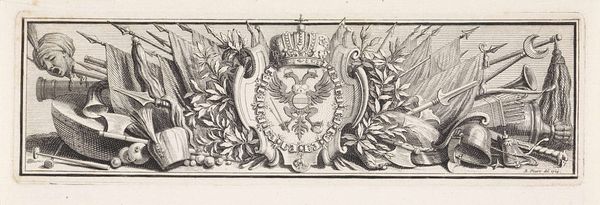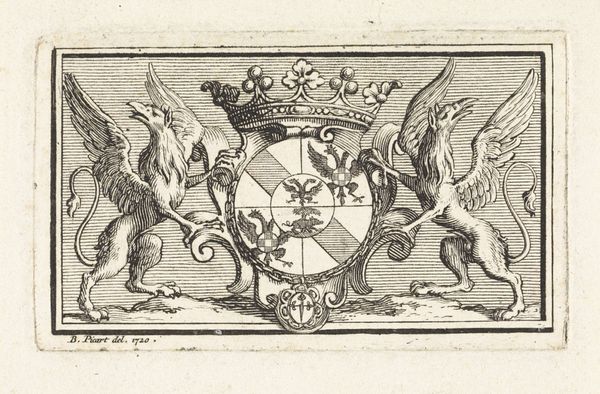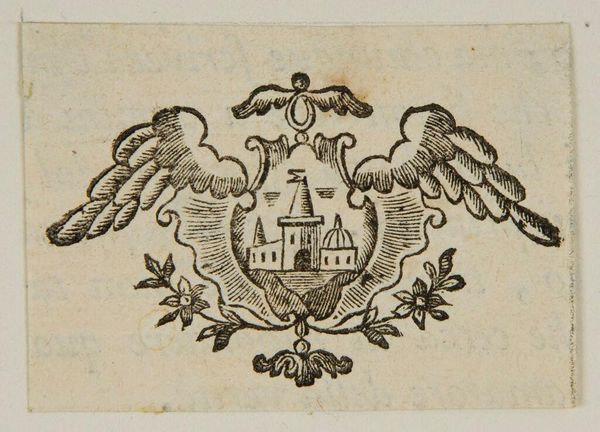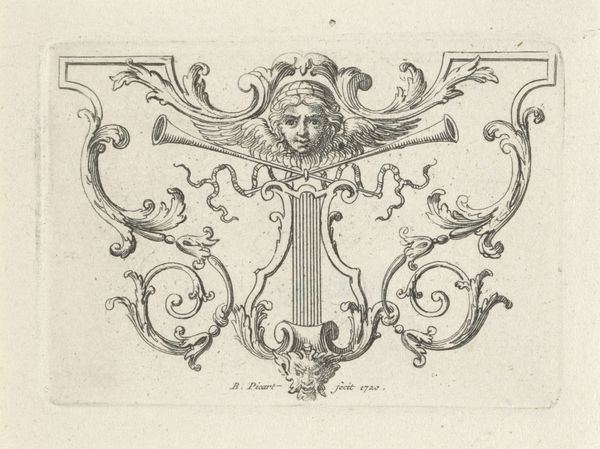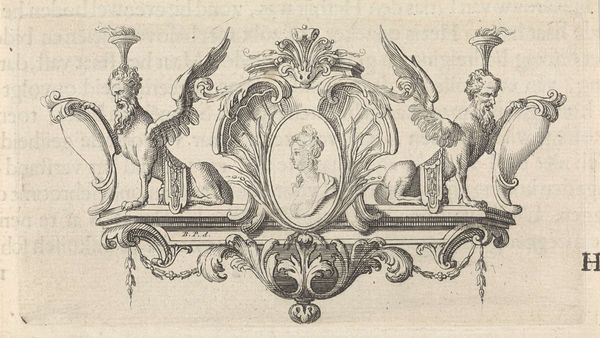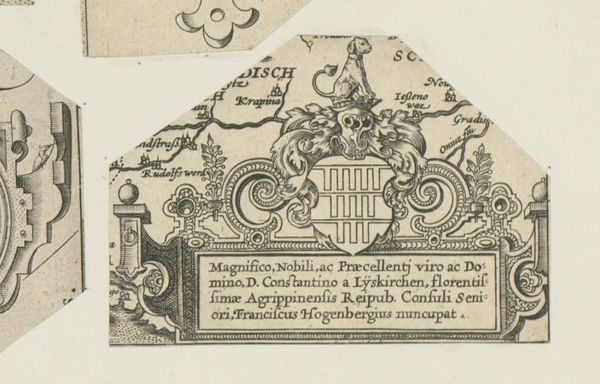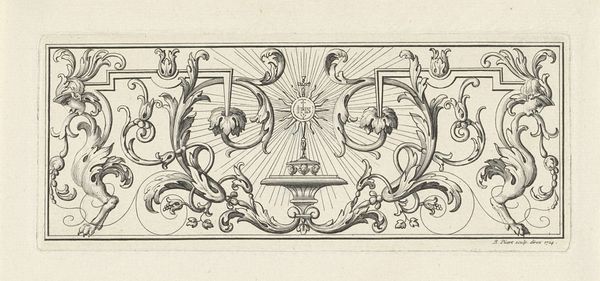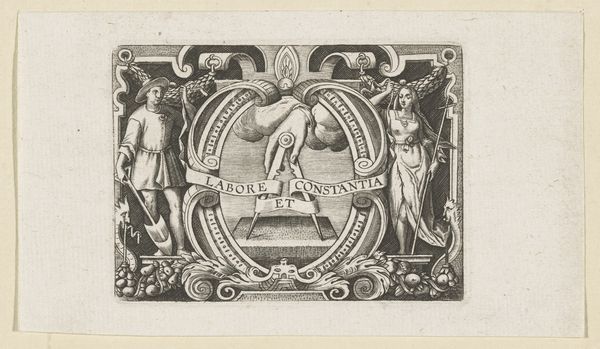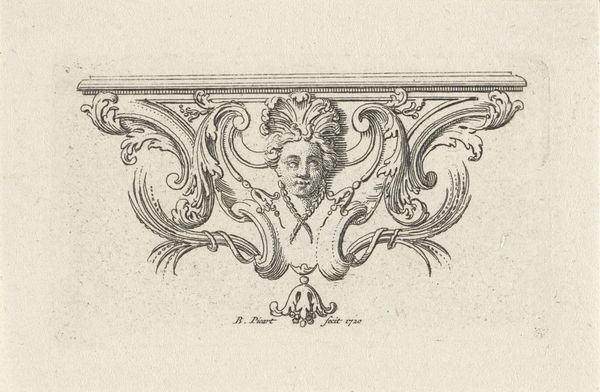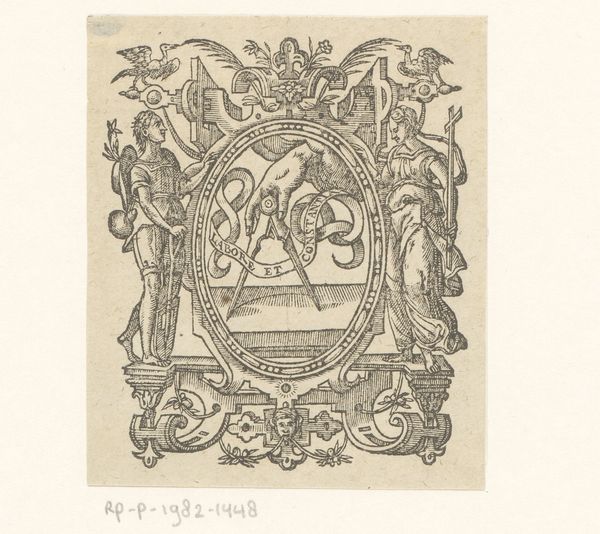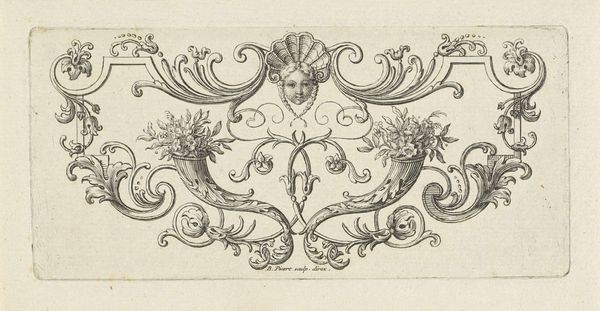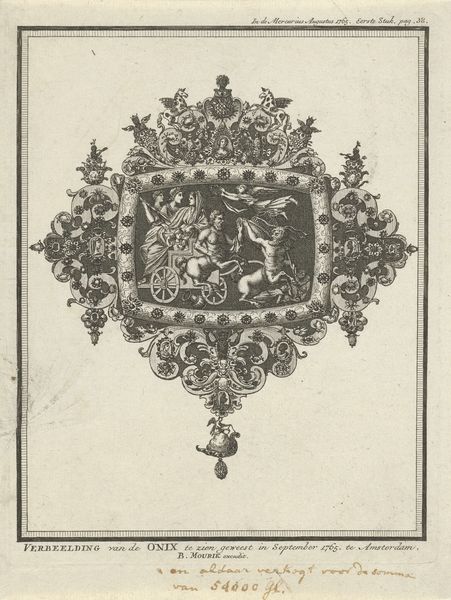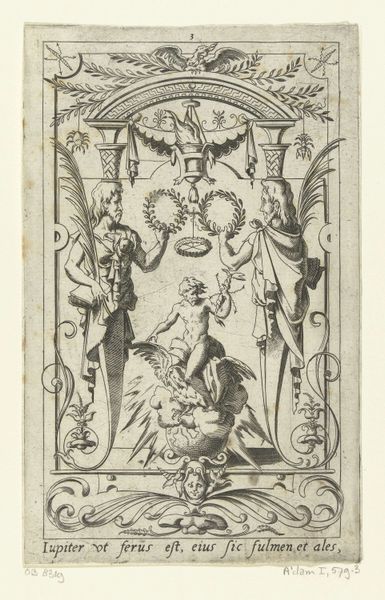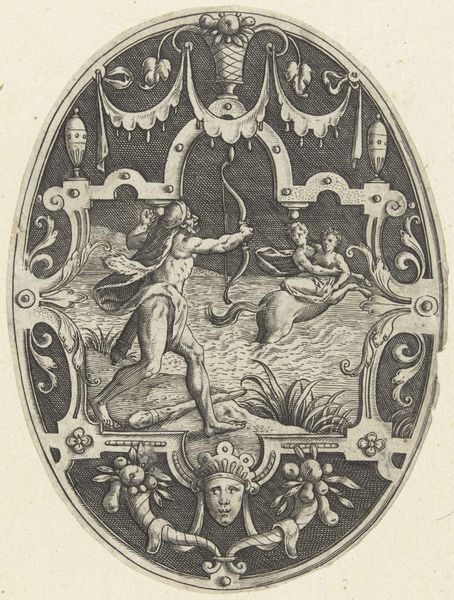
Dimensions: height 33 mm, width 134 mm
Copyright: Rijks Museum: Open Domain
This small, anonymous engraving presents a rectangular cartouche featuring a goat's head at its center. The work probably dates to the 17th or 18th century, a time when cartography and the decorative arts intertwined, reflecting Europe's burgeoning age of exploration and its fascination with classical knowledge. Cartouches, often used on maps to frame titles or explanatory text, were more than mere decorations; they were symbolic spaces reflecting the cultural values of their time. The inclusion of a goat's head introduces a complex layer of meaning. Goats are often associated with virility, stubbornness, and even the devil. The Latin text "Orbum Creta nomina, quarum situs ignoratur" translates to "Names of Crete, whose location is unknown," adding an air of mystery. This cartouche, with its blend of classical references, heraldic imagery, and geographical text, encapsulates a moment in history when knowledge was both power and a puzzle, and when the edges of the map represented not just the limit of exploration, but also the boundary between the known and the imagined.
Comments
No comments
Be the first to comment and join the conversation on the ultimate creative platform.
